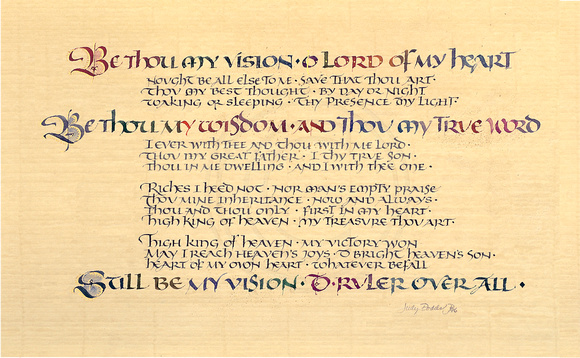Category:Artistic
Subcategory:Paintings
Subcategory Detail:
Keywords:1912 music, 1912., 8th Century, 8th century text, Anglican, Baptist, Be Thou My Vision 1986, Catholic, Christ, Christian, Dallan Forgaill, Episcopalian, God, Ireland, Irish, Lindesfarne Gospels Design Elements, Lorica, Lutheran, Methodist, Pentecoatal, Presbyterian, Uncial, an incantation recited for protection in arming oneself for spiritual or physical battle., artful, artistry, belief, believe, blessing, certain, choir, choral, christianity, church, confidence, conviction, convinced, cultural designs, cultural elements, culture, decorated letter, devotion, devotions, faith, fine art, glory, glory of God, gold, guitar, heart, heaven, heavens remember, hope, hopeful, hoping, hymn, hymnal, hymns, illuminated letters, illumination, inspiration, inspiring, joy, king, light, love, meditate, meditation, meditations, music, musicians, organ, piano, pipe, positive, praise, prayer, presence, ruler over all, sing, singing, song, songs, sure, translated from ancient Irish to English by Mary E. Byrne in 1905, treasure, trust, verse, versed by Eleanor H. Hull, verses, victory, vision, words attributed to Dallan Forgaill


